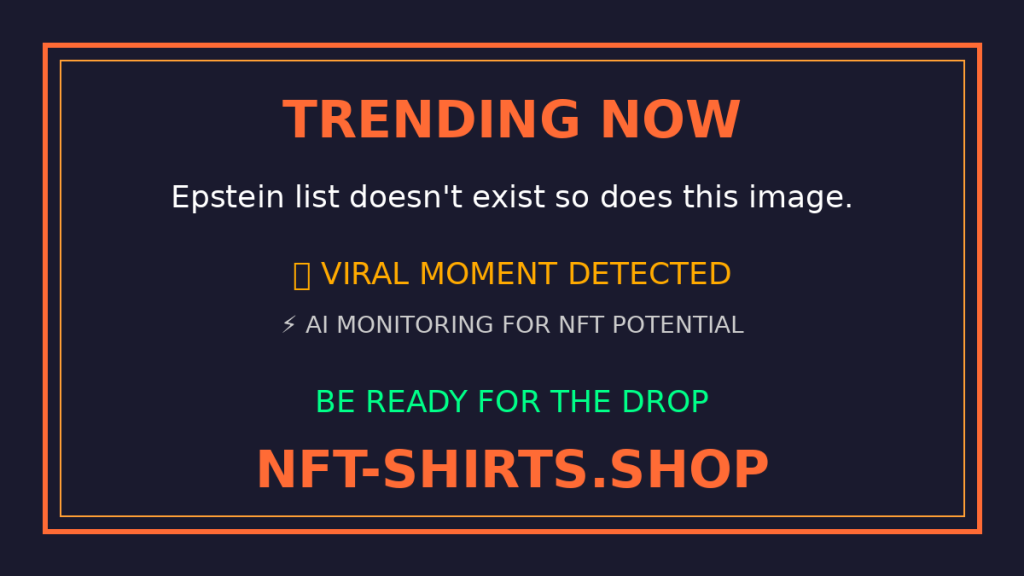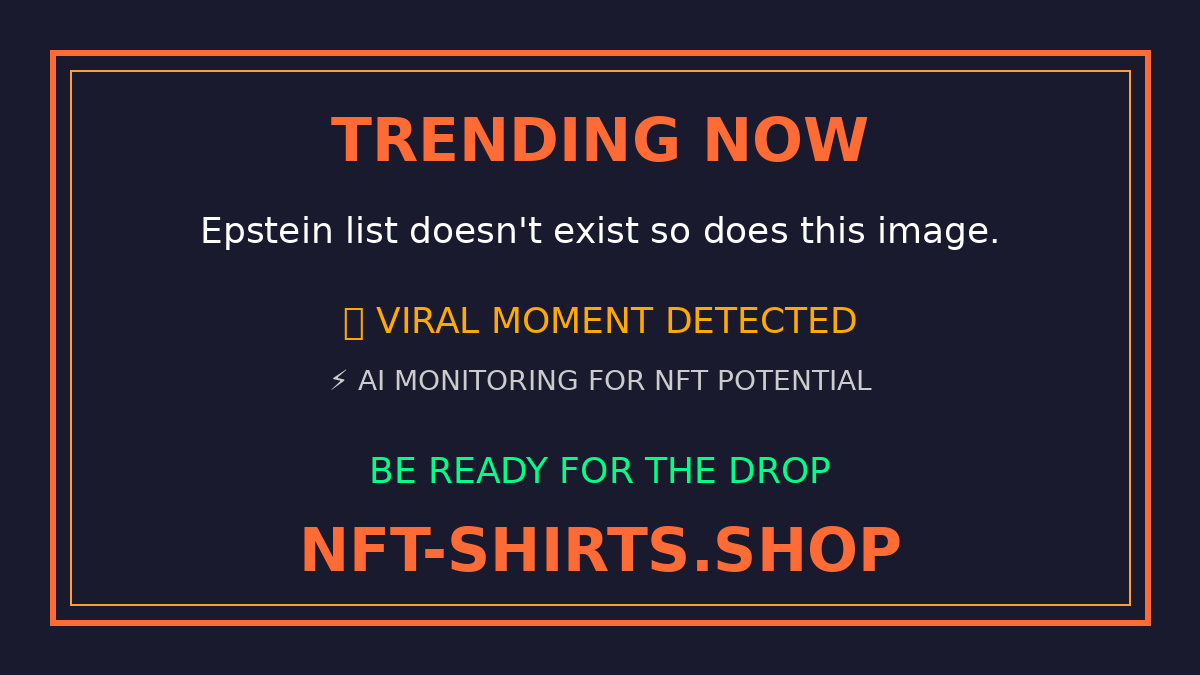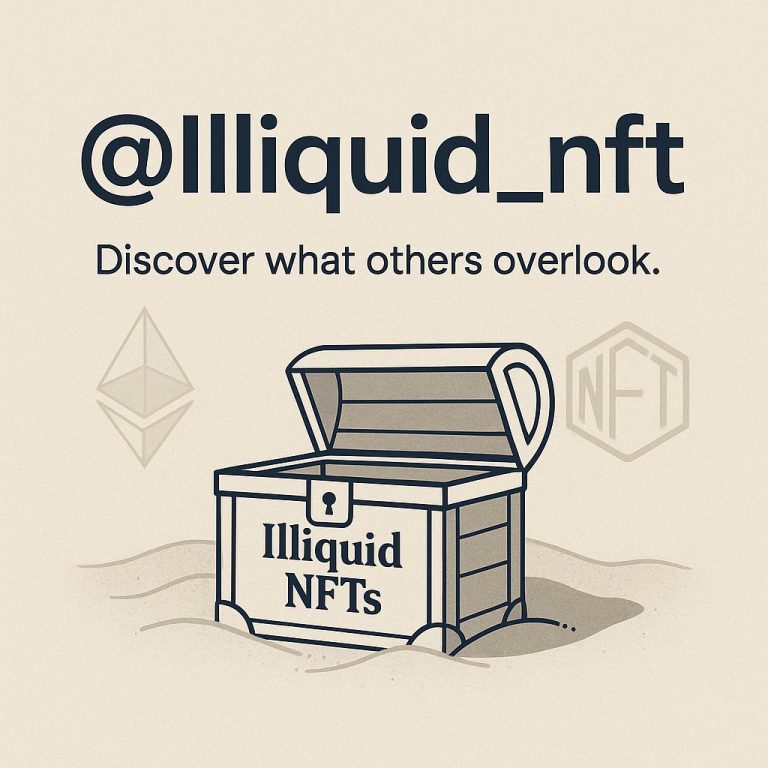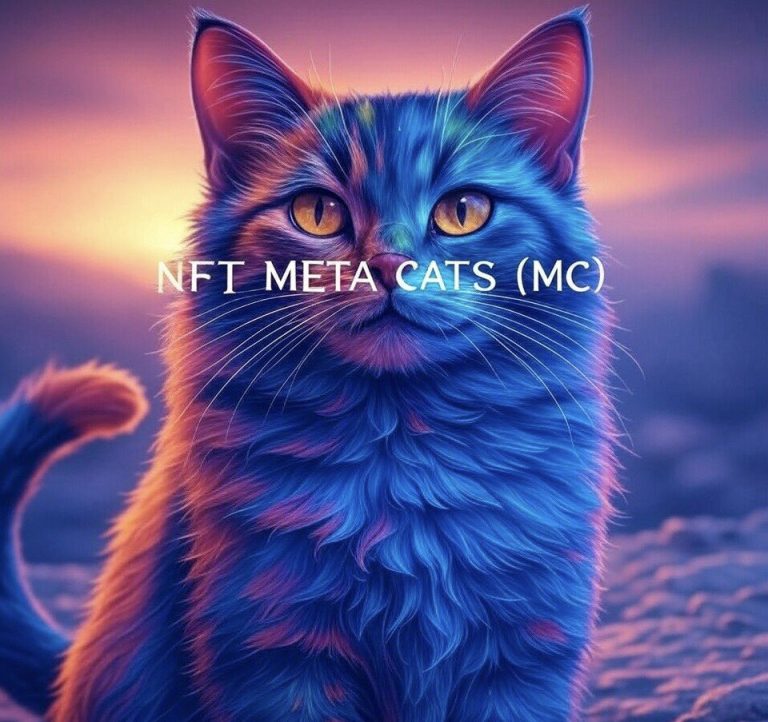
The Shifting Sands of Digital Ownership: A Snapshot of July 8th, 2025
The digital landscape is rarely static. It’s a churning ocean of trends, fleeting virality, and emergent technologies. Looking at a collection of tweets from July 8th, 2025, offers a fascinating glimpse into the currents shaping the world of Web3, NFTs, and decentralized finance (DeFi). It’s a day marked by attempts to capitalize on cultural moments, the rise of AI-powered trading, and the continued evolution of the NFT utility model. This isn’t just about digital assets; it’s about a fundamental shift in how value is created, distributed, and owned.
The Viral Void and the Opportunity for Creation
The first tweet, from NFTee-Shirts, is particularly intriguing. It points to a viral claim – the non-existence of an “Epstein list” and a related image – and immediately frames it as an opportunity. The tweet explicitly states the “significant viral momentum” and positions this moment as “ideal conditions for exclusive digital fashion creation.” This is a stark illustration of how quickly Web3 projects are learning to react to, and even *profit* from*, real-world events, regardless of their nature.
This isn’t necessarily a cynical observation. It highlights the speed and agility of the NFT space. Traditional fashion brands operate on seasonal cycles; NFT fashion can be designed, minted, and sold within hours of a trending topic. The hashtag usage (#NFTeeShirts, #NFTShirts, #NFT, #Bespoke) is a clear attempt to capture search traffic and connect with a relevant audience. The image accompanying the tweet likely depicts a digitally designed t-shirt referencing the viral claim, further emphasizing the rapid response time. The core strategy here is *opportunistic relevance* – tapping into existing online conversations to drive demand.
DeFi Gets Smarter: The Rise of the AI Trading Assistant
A dominant theme across several tweets is the integration of Artificial Intelligence (AI) into DeFi. Saray’s tweet introduces $BNKR, described as more than just a bot, but a “full-on AI-powered trading assistant.” The features listed – lightning-fast swaps, cross-chain bridging, pro-level limit orders, real-time token analysis, and one-click NFT minting – represent a significant leap forward in DeFi accessibility and functionality.
Traditionally, navigating the DeFi landscape required a degree of technical expertise. Users needed to understand concepts like liquidity pools, slippage, and gas fees. $BNKR aims to abstract away this complexity, offering a user-friendly interface powered by AI. The tweet from Axe (@axe123111) further emphasizes this point, showcasing how users can simply *tag* @bankrbot in a post to initiate various actions – trades, limit orders, NFT mints, even coin launches and airdrops. This “post-to-earn” functionality is a compelling vision of a future where financial tools are seamlessly integrated into social media. The promise of “printing money” is, of course, a bold claim, but it speaks to the potential for AI to democratize access to sophisticated trading strategies.
NFT Utility Beyond Collectibles: Revolving Games and Tokenomics
Ya_KseniYa’s analysis of Revolving Games provides a crucial insight into the evolving utility of NFTs. The focus isn’t simply on owning a digital collectible, but on the economic benefits associated with holding the NFT. The breakdown of the token supply (40B total, 62% allocated to NFT holders and node operators) and the pre-market price ($0.004, $160M FDV) demonstrates a clear attempt to create a sustainable economic model.
The mention of “stakers get better rewards” highlights the importance of incentivizing long-term holding and participation. This is a common strategy in GameFi projects, where NFTs often grant access to exclusive in-game features, governance rights, or a share of the game’s revenue. The shift from purely speculative NFT collecting to NFTs as functional assets within a larger ecosystem is a key trend. The success of Revolving Games will likely hinge on its ability to deliver on these promised economic benefits and build a thriving community.
Collaboration and Growth: Web3 Marketing and Analysis
The partnership announcement between PlayMind Protocol and QuestN_Com underscores the growing importance of marketing and analytics in the Web3 space. QuestN is positioned as “the pinnacle of Web3 marketing, growth, and analysis tools,” suggesting a sophisticated understanding of the unique challenges and opportunities presented by this new ecosystem.
Traditional marketing strategies often fall flat in the decentralized world. Web3 requires a different approach – one that prioritizes community building, transparency, and genuine engagement. The collaboration between PlayMind and QuestN suggests a focus on data-driven marketing, leveraging analytics to optimize campaigns and reach the right audience. This partnership is a recognition that simply building a great product isn’t enough; you also need to effectively communicate its value to the Web3 community.
A Future Forged in Code and Community
The tweets from July 8th, 2025, paint a picture of a Web3 landscape that is rapidly maturing. The opportunistic nature of NFTee-Shirts, the AI-powered automation of $BNKR, the utility-focused tokenomics of Revolving Games, and the strategic partnership between PlayMind and QuestN all point to a future where digital ownership is more accessible, more functional, and more integrated into our daily lives.
However, it’s crucial to remember that this is a nascent ecosystem. The promise of “printing money” with AI trading assistants comes with inherent risks. The economic models of NFT projects can be complex and vulnerable to market fluctuations. And the ethical implications of capitalizing on viral moments, regardless of their origin, deserve careful consideration.
The true revolution isn’t just about the technology; it’s about the shift in power dynamics. Web3 promises to empower individuals, decentralize control, and create a more equitable financial system. Whether it will deliver on that promise remains to be seen, but the trends observed on July 8th, 2025, suggest that we are moving closer to that future, one block at a time.
Sources:








